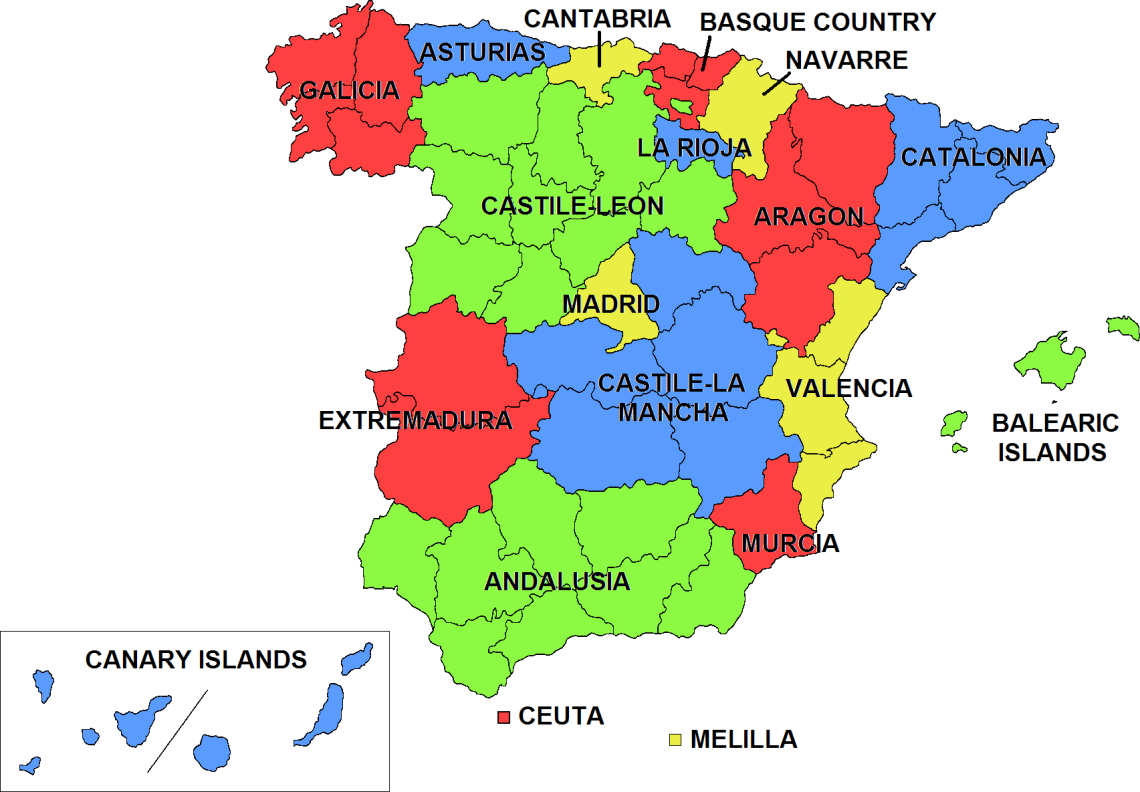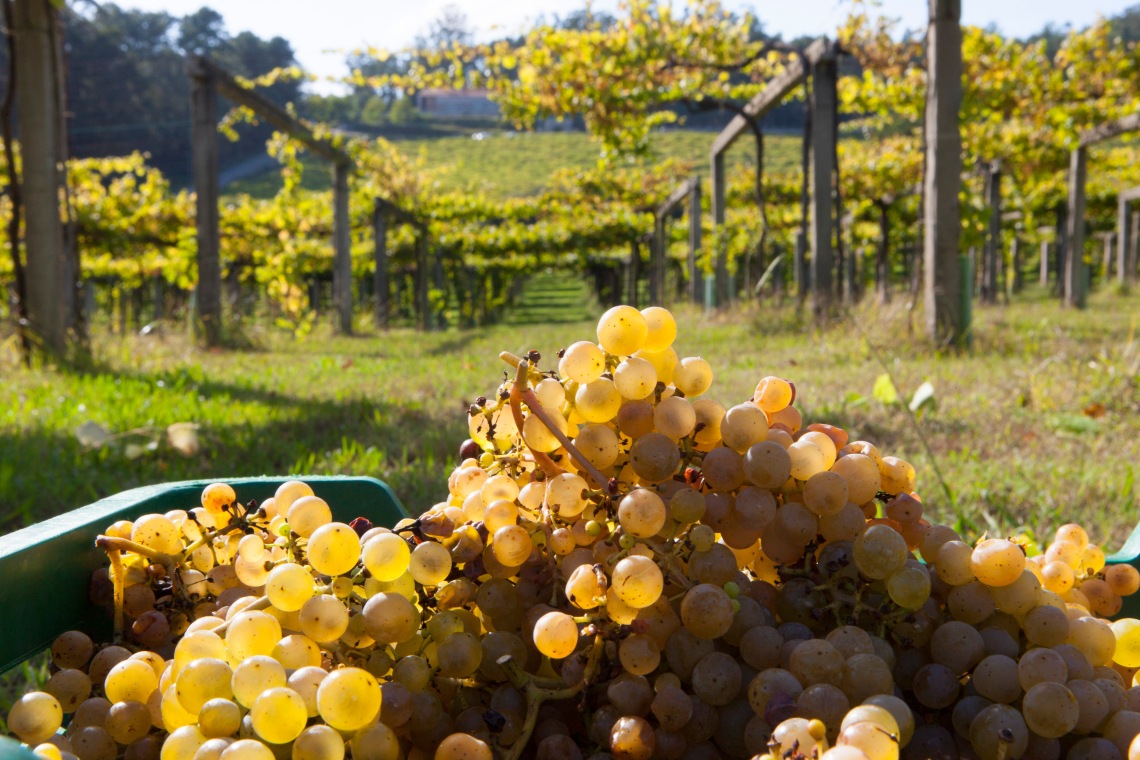The wines of Rias Baixas came through Chicago on Wednesday, April 20th. Sommelier Jill Zimorski of Alinea lead a tasting seminar to a packed house at Little Goat Chicago. I have been to Madrid and the Prado in Spain, driven across the dusty plains of La Mancha to the historical town of Toledo, taken a putt putt train by mistake(that is another story for another time) slowly up and down the hills of Granada after visiting the Alhambra and have checked out Marbella and the Costa del Sol. Galicia, where the Albariño wines are produced in the very northwestern corner of Spain above Portugal, is an area I have been fascinated by and I was excited to hear, see, and learn more about and taste their wines.
Where o where is Rias Baixas?(if you scroll down there is a quick video link guiding you how to pronounce it). The Rias Baixas (lower rivers) wine region is situated in the administrative region of Galicia (northwest Spain). From Galicia to the west is just the cold Atlantic for miles. At one point, explorers thought Galicia was the end of the world.

There are 5 wine areas, DOs (Denominaciones de Origen/wine appellations) in Galicia: Rias Baixas, Ribeiro (riverside, white and red), Ribeira Sacra (known for its reds produced from the mencia grape), Monterrei and Valdeorras (valley of gold). All the DO’s are in that northwestern corner right above Portugal. Rias Baixas, here is a quick video (because I found it hard to pronounce Rias Baixas) to help with its pronounciation, including a cameo of Mariola Bayolo of Martin Codax)

According to local legend, the Rias Baixas are the traces left by the fingers of God’s hand, when after creation he rested for a moment in Galicia. The rias reference four estuaries, Ria de Muros y Noia, the Ria de Arousa, the Rias de Pontevedra, and the Ria de Vigo. Where ever there are oceans and rivers, to me, it means lots of interesting forest, fauna, sea creatures, aka, good food and wine.

Karen McNeil, in the Wine Bible, calls Rias Baixas, “one of the world’s most breathtaking wine regions”. Yes, my kind of place!! Rivers always do great things for vineyards in terms of moderating temperature. With a marine climate, heavy rainfall but lots of sunlight hours (ripe fruit), many equate the area to Ireland or Scotland except for the eucalyptus trees on the hills. But I had not realized there is a strong Celtic heritage to the region which can be found in the old churches and the local food which includes their traditional stew of meat and potatoes, caldo gallego.



As an aside, the famous cathedral of Santiago de Compostela, the endpoint of the Camino de Santiago, the world renowned pilgrimmage/trekking route, is situated in the nearby province of Coruña. I have always heard of people trekking part or the whole route and is on my trekking to do list. One more possible itinerary item when you visit this area.

The soils of Rias Baixas are mostly granite with mineral-rich alluvial top soils(all good for grapes) and there are 5 wine sub-regions: Ribeira do Ulla, Val do Salnes, Soutomaior, Condado do Tea and O Rosal. Most of the wines that we tasted during the lunch were from Val do Salnes which is considered the birthplace of Albariño, between the Ria de Arousa, the Ria de Pontevedra and just north of the city of Pontevedra, in the map below.

The wine region of Val do Salnes is north of Pontevedra and it surrounds the historic town of Cambados.

Sometimes a picture tells a thousand words and as you can obviously tell by all the water, this area is known for the abundance and variety of seafood. So it is no wonder that Albariño and seafood are a match made in heaven. However, as I learned from the lunch and will go into detail about this in a bit, there are enough varieties and personality in Albariño wines that they can go with much more than just fish, as the folks at Little Goat demonstrated.
Another interesting (well at least to me) wine factoid, is that in most of Spain, wines are referred to by place like Riojas for example and this is one of the regions where the wines are referred to by varietal, Albariño.

The Albariño grape is thick-skinned and produces wines that are fruity with bright acidity, mineral overtones and moderate alcohol. As I found they are very food friendly and show aromas of green apple, honeysuckle, citrus , peach, pear and apricot. The wine had me at “honeysuckle”. Sommelier Jill Zimoski, who lead the discussion and tasting of the wines, described the markers for her of an Albariño, “it smells like a viognier with peach and apricot aromas and drinks like a riesling full of acid.” Albariño really gained momentum in planting and production in the mid 80’s when Spain joined the EU and new funds came into the area.

The wines we tried left to right included: 1) Paco & Lola 2015, It was a bit spritzy with some undissolved CO2 on the outset which disappeared and then had pronounced flavors of citrus and green apple, 2) Terra De Asorei Pazo Torrado 2015, this was the lightest and leanest of the 5, it was very crisp and very refreshing with notes of citrus and pear, 3) Bodega Veiga Naum, Veiga Naum Albarino 2015, This had aromas of peach, honey suckle and stone fruit, it was very crisp and had a nice mouthfeel, this was one of my favorites and Binny’s here in Chicago sell it. 4) Martin Codax 2014, This winery was founded in 1986 as a cooperative with about 50 local grape growers, and today has about 1,400 small vineyard parcels farmed by 550 families in and around the town of Cambados. Most to all of the grapes are harvested by hand. This wine had the lovely citrus, and honeysuckle notes but a little more weight on the palate because it sat on its lees for 4 months, yet still plenty of acidity and went really well with the plates the Little Goat folks put together. 5) Bodegas La Cana 2014.
Here is the menu from the folks at Little Goat and the plating:


The bright acidity and minerality of the wines paired really well with all the items but my favorite was probably the spring onion pierogi in the lower middle. Jill Zamorski kept reinforcing the characteristics of Albariño’s, ripe fruit because of the sunshine, bright acidity and minerality because of the soil with hints of salinity. Then the different cellar techniques like malolactic fermentation and lees aging gave added weight to the wine. She had themed her talk, the “search for typicity”. I have to say, my perception and opinion of Albariño really did change after this lunch. I saw the many sides of Albariño and its ability to pair with lots of different foods. Yet again, the only better thing than this lunch would be to having a lunch in Cambados by the ocean or at one of the beautiful vineyards.

Sources: The Wine Bible Karen McNeil, The Oxford Companion To Wine Jancis Robinson, the marketing material from DO Rias Baixas and my good old WSET materials. I wish I could say that I visited these guys first hand. Yet another beautiful place that goes on my “to visit list”.


Thanks for sharing this very important factor about Albariño.
Love this grape!
Salud!
LikeLike